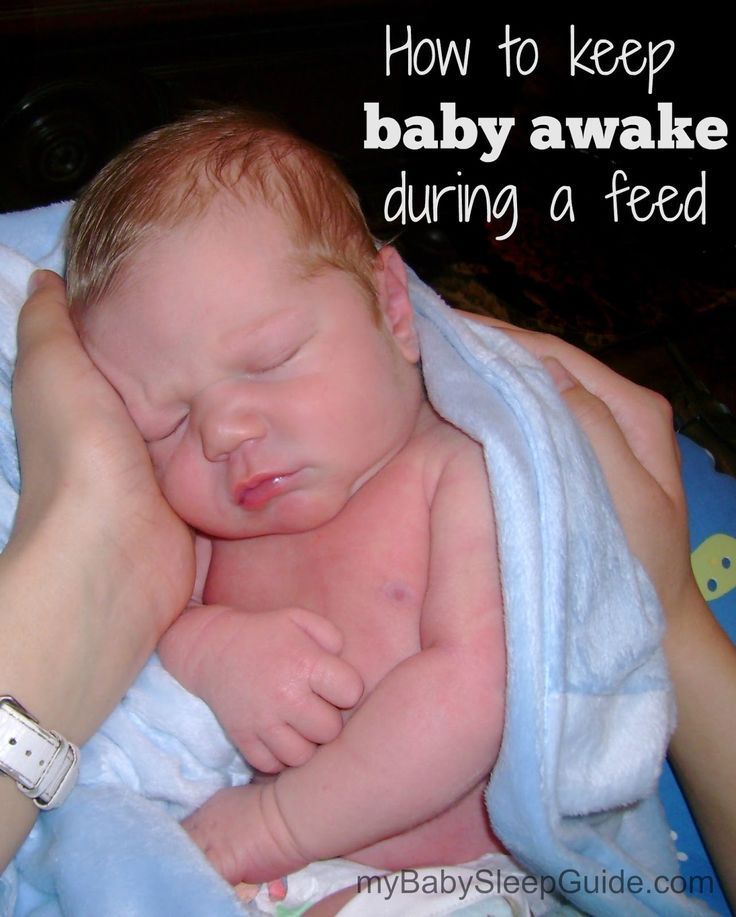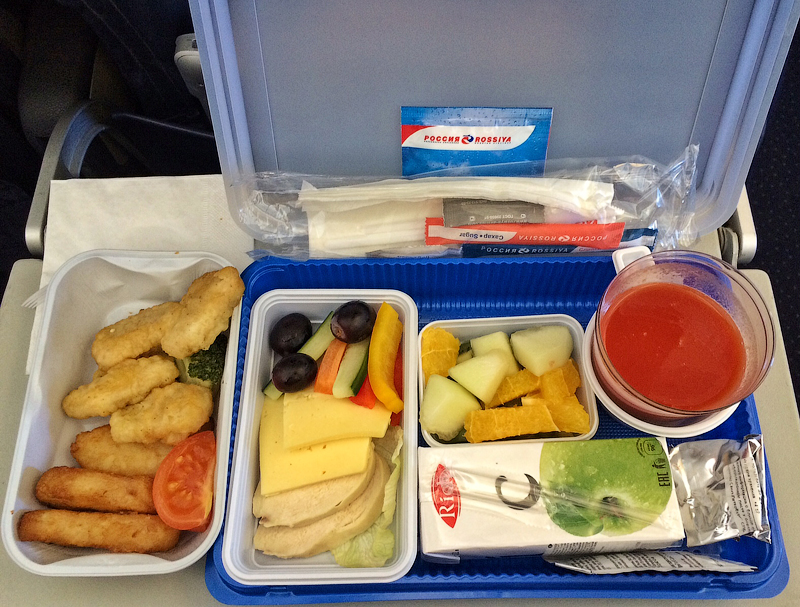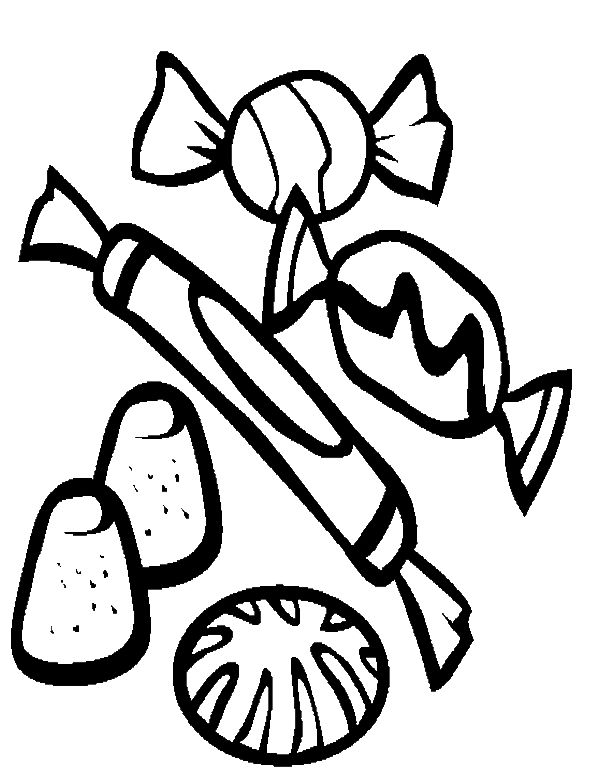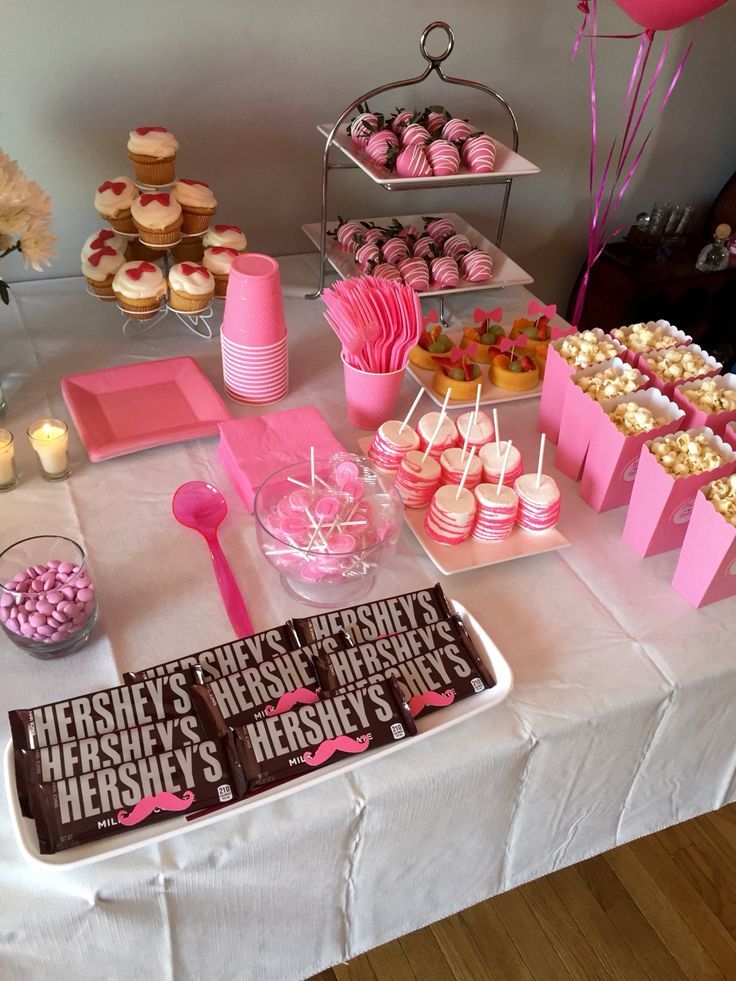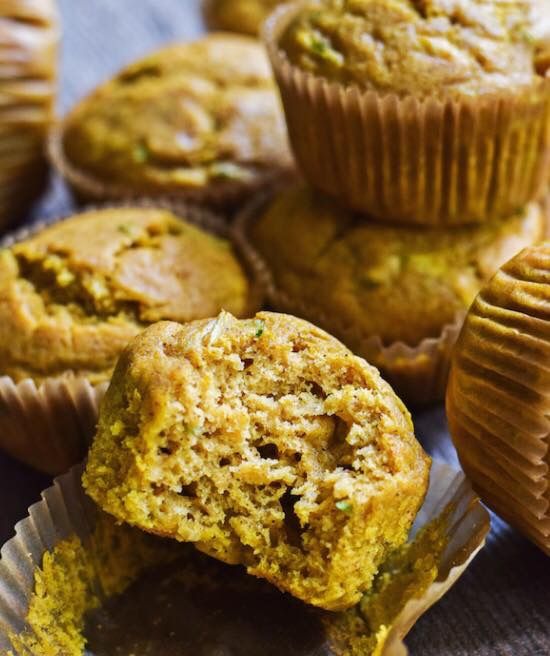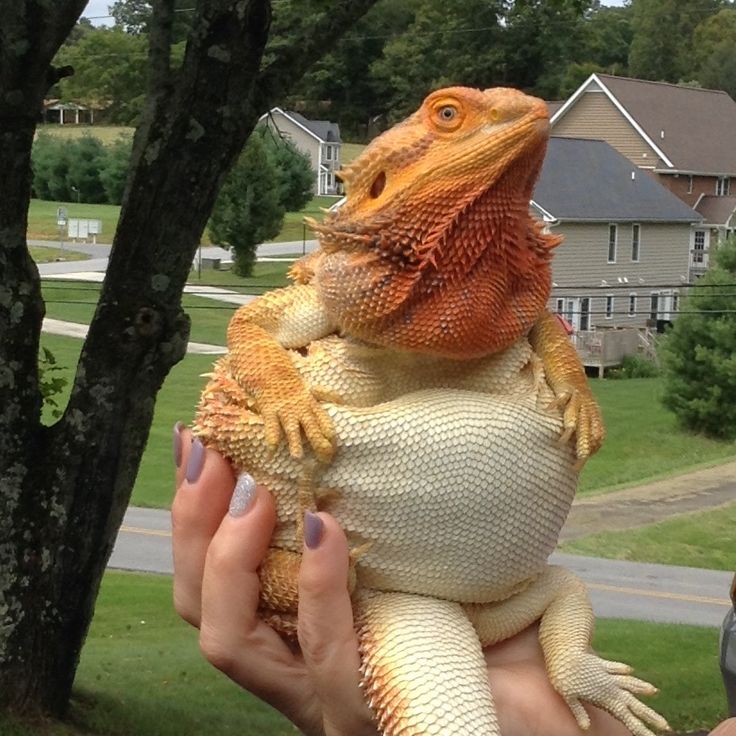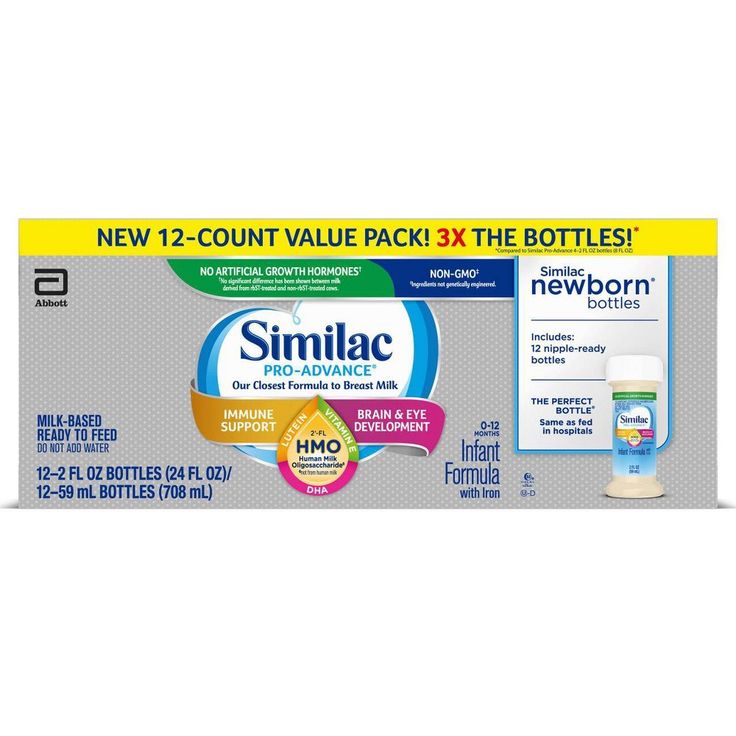What size should food be for baby led weaning
Ultimate Guide to Baby Led Weaning (and Best First Foods)
Learn the basics of how to do the feeding approach known as “baby led weaning” and the best first foods for baby to make starting solids easy and fun. Plus: Learn why it’s perfectly okay to use a combined approach of blw and purees.
Baby Led Weaning
The feeding approach known as “baby led weaning” or “BLW” for short, is a style of feeding infants that allows them to feed themselves right from the start. The food is offered in thick finger-size pieces and is soft and easily squishable between your fingers. This way, the food is both easy to hold but has a low risk of choking.
TIP: This method became popular about a decade ago after the publication of the Baby Led Weaning: The Essential Guide to Introducing Solid Food by UK author Gill Rapley.
BLW Baby
One of the many reasons that people are starting to opt for this style of feeding more and more is simply that it’s easy. In many cases, you can modify foods you’re already making to share with your baby and there’s not always a lot of separate cooking involved. It also allows a baby to have control over what goes into their mouths, which sets a good precedent for letting them eat intuitively from the start.
What age should I start baby led weaning?
According to the American Academy of Pediatrics, a baby is ready to start solids with baby led weaning when:
- They’ve doubled their birth weight (at least).
- They can hold their head up well and are starting to sit up unsupported.
- They show signs of being interested in food (watching you eat, reaching for food when you’re eating, etc).
- When you feed them, they are able to move the food around in their mouths—rather than spit it right out.
TIP: Look for a highchair that allows a baby to sit up relatively straight so they can have good posture and better control over their arms and hands.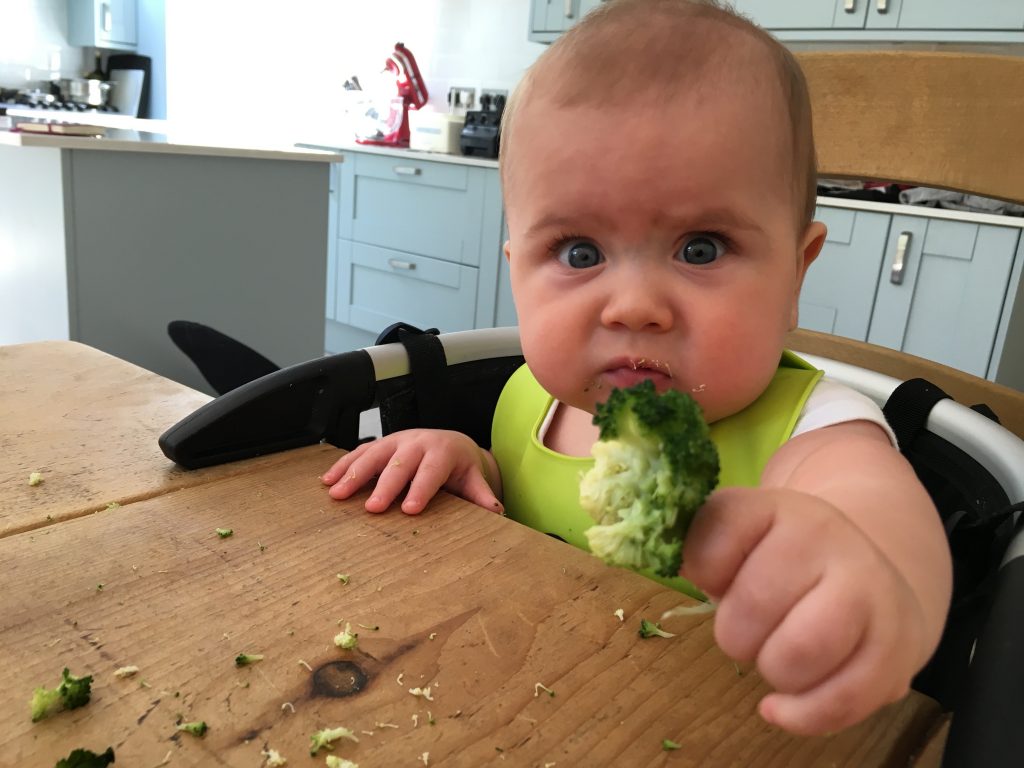
How to Start Baby Led Weaning
The first time you offer solids is such a fun milestone, so you’ll be ready once you follow these simple steps.
- Make sure baby has hit the milestones listed above to let you know that he’s ready to start.
- Get the highchair ready and adjust the straps and foot rest as needed.
- Plan to introduce water when you start solids. I recommend a trainer cup.
- Choose one food to start with and plan to offer only one food at a time.
- Stop when baby starts to fuss, turns his head away, or shows any other signs of not wanting to continue. It’s usually fairly obvious when they are done!
TIP: If you start offering solids and baby just doesn’t seem interested at all, it’s okay. Take a break for a few days or a few weeks and start again. Each kiddo has their own unique timeline.
Best Tips for Starting BLW
Here are a few more tips to consider and review before you get started.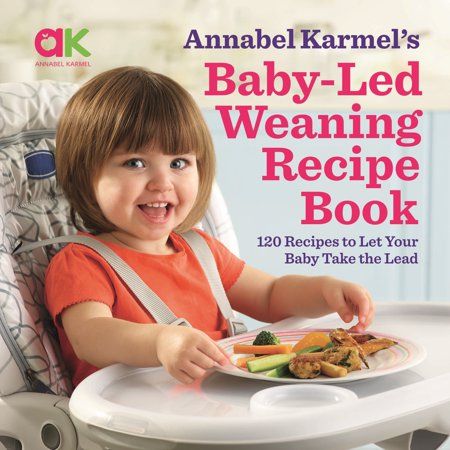
- Understand the gag reflex. Gagging is different than choking though and is most often a sign that baby is learning to move food around in their mouths—and to get it out of their mouths, which is a skill you want them to have!
- Brush up on the basics of how to know when baby is ready to start solids. (Go back to the top of this post for the signs to look for.)
- Set them up for success with a highchair that allows them to sit up straight and has foot support.
- Sit with them as you offer food.
- Check your own expectations of what will happen and simply allow your baby to take the lead.
- Start with one new food a day or every few days.
- Vary the textures of foods you offer to start exposing baby to many right from the start.
- Offer water in a sippy cup or small open cup.
TIP: Remember that breastmilk or formula will continue to satisfy baby’s hunger for the first few months of eating solids. Do not expect solids to replace milk feedings at this age.
First Foods for Baby
Starting solids with baby led weaning or purees are both perfectly acceptable ways to introduce a baby to solid foods—but the topic can get so heated! There’s a lot of pressure to do it the “right” way and I’m here to say that there isn’t one. You 100% can do one or the other, or combine the two to make it work for your family. It’s all good!
Remember, the goal with first foods for baby is that they’re introduced to flavors, nutrients, and foods they can easily eat or suck on. It should be an enjoyable milestone for all involved.
TIP: It’s a good idea to get into the habit of offering an iron-rich food since iron stores in babies start to run out around 6 months and they’ll need to start ingesting it in their food.
Best First Foods for Baby Led Weaning
Here are some of our favorite first foods to offer baby led weaning style. You want foods to be finger sized so they are large enough that baby can’t force the whole piece into their mouth, and a shape that’s easy for a 6 month old to hold with their chubby little hands. These are some of our favorites.
These are some of our favorites.
- Roasted sweet potato wedges
- Roasted apple wedges, skin on to help them hold together
- Roasted or steamed broccoli florets (big enough for baby to hold)
- Melon slices
- Thick mango slice
- Banana with some of the peel still on
- Toast sticks with mashed avocado
- Avocado spears (make sure the avocado is ripe and soft)
- Lamb or beef, on the bone or a large piece for baby to suck on
- Dark meat chicken, on the bone or a large piece for baby to suck on.
TIP: The foods should generally be soft enough to squish between your fingers with the exception of the large pieces of meat. If baby gnaws a piece down into a smaller piece, replace it with a larger one to avoid her putting a chunk of food into her mouth.
Baby Led Weaning Banana
To serve a banana to a baby, wash it well, then slice it in half. Cut off an inch or two of the peel, but leave the rest of the peel on so it’s not slippery for baby to hold. They’ll suck on the top part like a little popsicle! You can also help them hold the banana if needed.
They’ll suck on the top part like a little popsicle! You can also help them hold the banana if needed.
Foods to Avoid Serving While Doing BLW
You want any foods you offer to a baby while doing baby led weaning to be soft enough to squish between your fingers and safe for them to eat and digest. Plan to avoid:
- Anything hard, sticky, or crunchy (like raw apple or carrot, whole nuts, crackers, or a big spoonful or nut butter)
- Added salt
- Cow’s milk (which is difficult for kids under 1 to digest; plain yogurt is fine though)
- Added sugar (they simply don’t need it)
- Honey (to avoid a risk of botulism)
- Super slippery foods that would be hard for baby to hold (which can be frustrating)
TIP: Always sit with your baby and watch them try to eat. They are your best guide for making adjustments to the foods you serve.
Baby Led Weaning and Choking
There are many parents who dislike this method of feeding because it often sounds like a baby is choking.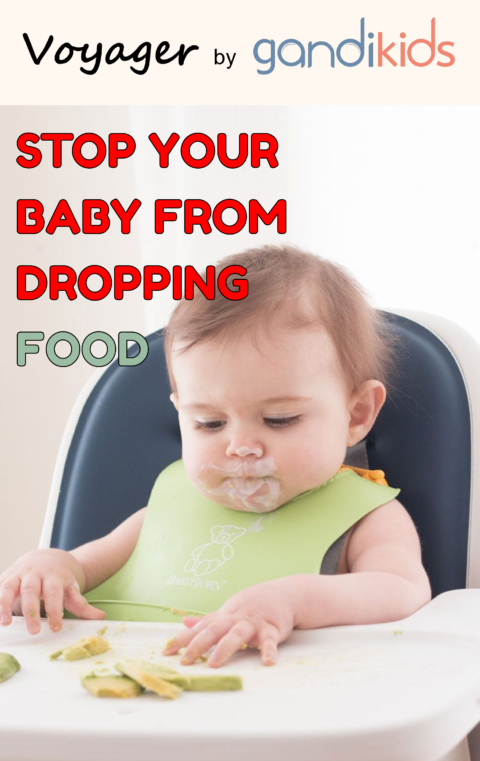 And while there are surely some incidences of choking, what’s more likely is that a baby will occasionally gag on a piece of food that gets into their mouth that they weren’t expecting.
And while there are surely some incidences of choking, what’s more likely is that a baby will occasionally gag on a piece of food that gets into their mouth that they weren’t expecting.
But remember: Gagging is a sign that baby is doing what she needs to in order to move the food around in their mouth as they learn to eat. It usually sounds more dangerous than it actually is.
TIP: If the sound of gagging really freaks you out, you’re not alone. Consider offering more preloaded spoons with purees to start your journey more slowly.
How to Cut Foods for BLW
You generally want the food to be big enough that it would be difficult for baby to put the entire thing into their mouths. Here are some specifics:
- Foods that are roughly the size of a finger, so about a 4-inch stick.
- Foods that are easy for the baby to pick up—they can’t pick up small pieces until closer to 9 months when they develop the ability to use their fingers in what’s known as a “pincer grasp”.

- Foods that aren’t too slippery—so you can wash and leave some of the peel on fresh foods like bananas, avocado, kiwi, and mango.
TIP: You can also go even bigger if you’re worried about size. Think half of a slice of bread or a big chunk of watermelon.
Will my baby actually eat much food with BLW?
Probably not at first. There will likely be more tasting of the food than eating of it and that is totally fine. They will still rely on breast milk or formula at this age for their main nutrition, so don’t expect them to suddenly start eating full meals. (They’ll get there in a few months, but it takes time!)
Do babies need teeth for baby led weaning?
No! Gums are super strong and front teeth aren’t used for chewing—that happens when the back molars come in. Teeth really have nothing to do with whether or not a baby can eat solids.
TIP: Learn more about what to expect from teething here.
Can you mix baby led weaning and purees?
Absolutely! I think it’s a great idea to mix the two methods simply because it gives you many more options for foods and allows the baby to experience more textures. I recommend allowing babies to feed themselves preloaded spoons—so you put the puree on a spoon, then hand it to them to actually put the spoon into their mouth—so they still have control over what goes into their mouths.
I recommend allowing babies to feed themselves preloaded spoons—so you put the puree on a spoon, then hand it to them to actually put the spoon into their mouth—so they still have control over what goes into their mouths.
TIP: Feeding some purees is also helpful if you’ll be sending food with a baby to daycare since the care provider may not have experience with blw.
Best First Foods for Baby: Purees
Here are some of our favorite purees to start offering baby when they’re ready to start solids. Remember: There’s no evidence that says that you need to start with vegetables versus fruits, so go with something that tastes good to you. Start with single foods pureed smooth and offer just a little at a time on a spoon.
- Mashed roasted sweet potato puree
- Mashed avocado puree
- Mashed banana puree
- Butternut squash puree
- Applesauce, unsweetened
- Mashed pea puree
- Oatmeal baby cereal (with added iron)
TIP: One of my favorite baby food companies is Amara Organic Baby Food, a company using a nutrient protection technology that makes organic purees just as good as homemade. I love how easy they are to use when I need a shortcut and that they have fun baby-led weaning recipes on the side of every box! (paid affiliate link)
I love how easy they are to use when I need a shortcut and that they have fun baby-led weaning recipes on the side of every box! (paid affiliate link)
How do I know when baby has had enough?
If your baby is eating and then starts to turn her head away or just refuses to open her mouth, she’s done! Babies may also start to fuss if they’ve had enough. Learning this new skill takes time and babies can become tired fairly quickly into the process, so don’t expect them to always eat very much or to last very long at the table. This stage is about exploration!
Baby with preloaded spoon of yogurtHow to Let Baby Self Feed Purees
I love offering purees on a preloaded spoon. To do this, the parent, puts some of the food on the spoon and hands it to baby. Then baby can bring the food to their mouth all by themselves. This gives you some of the same advantages of baby led weaning, but can be more comfortable for many parents.
Remember, you can mix what you offer, going back and forth between purees and blw finger foods, so you can offer the same food two different ways to let baby explore. The main goal is to avoid forcing baby to take more bites than they want to, which can sometimes happen with purees.
The main goal is to avoid forcing baby to take more bites than they want to, which can sometimes happen with purees.
When to Introduce Potentially Allergenic Foods
In recent years, guidelines have been updated on when to introduce potential allergens including peanuts, eggs, and shellfish, so unless you have a family history of a food allergy, you can go ahead and introduce them soon after baby starts eating solids. In fact, research is showing that introducing these foods early can actually protect baby from developing an allergy. Talk to your pediatrician if you have concerns.
TIP: Thin unsweetened peanut butter with water to form a very thin Peanut Butter Puree until it’s about the consistency of regular yogurt and offer a very small amount on a spoon or spread on a toast stick.
What does a baby led weaning meal look like for months 7 and 8?
Until a baby is closer to 9 months and is able to pick up smaller pieces of foods, but after they have gotten the hang of one food at a time, I try to offer 1-2 foods they can feed themselves and one puree.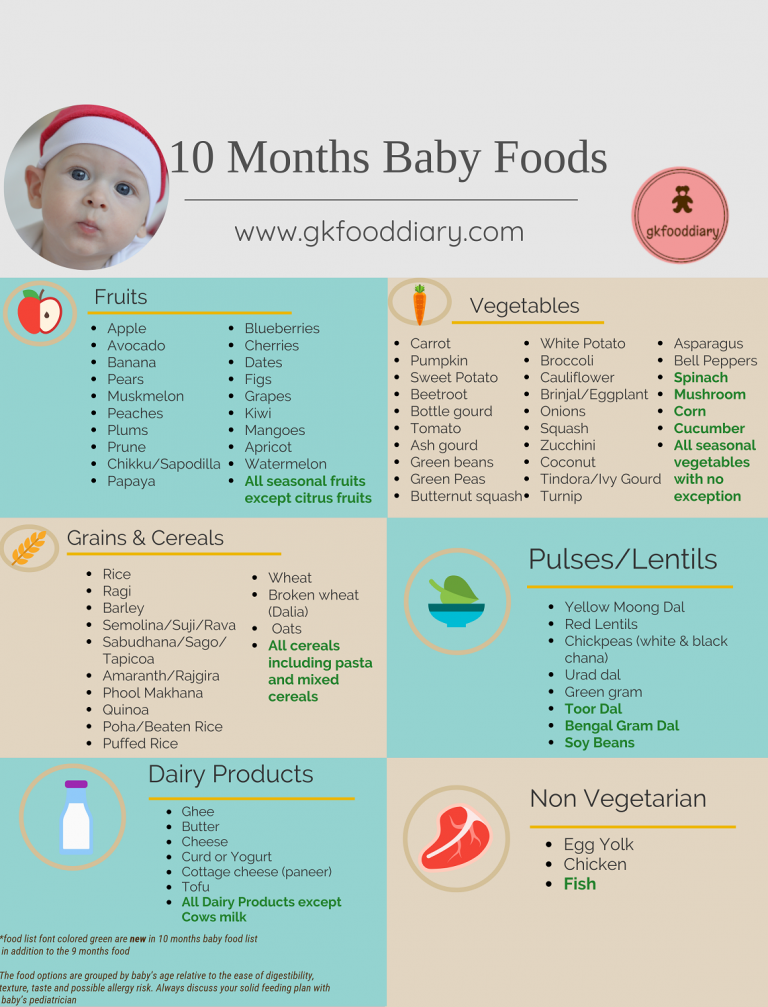 This offers them a chance to ingest more via the puree but still feed themselves a range of textures. You can do more or less food following the lead of the child.
This offers them a chance to ingest more via the puree but still feed themselves a range of textures. You can do more or less food following the lead of the child.
TIP: My Baby Food Chart has loads of with ideas for blw foods and purees by month.
Recipes for Every Stage of Starting Solids
If you’re ready to start solids with baby, or you’re just curious what it looks like to do a mix of baby led weaning and purees, check out my Yummy Baby Food cookbook. It goes stage by stage with specific foods to start in each, with simple recipes and easy feeding tips.
Listen to a recent podcast episode to hear about some of the basics of BLW with our guest Megan McNamee, MPH, RDN, CLT, and a Registered Dietitian Nutritionist specializing in pediatric nutrition who runs Feeding Littles.
I’d love to hear any questions you have with BLW or if your baby had a first food that I didn’t list here. Please comment below to share your experience!
Prep Time 5 minutes
Total Time 5 minutes
Author Amy Palanjian
Cuisine American
Course Dinner
Calories 28kcal
Servings 1
Banana
- ▢ 1 small ripe banana with peel on
Roasted Sweet Potato
- ▢ 1 small sweet potato + 1 teaspoon olive oil
Roasted Apple
- ▢ 1 small apple + 1 teaspoon butter or neutral oil
Roasted Broccoli
- ▢ 1 cup broccoli florets + 1 teaspoon olive oil
Sauteed Green Beans
- ▢ 4 green beans 1 teaspoon olive oil
Melon
- ▢ 1 small piece watermelon or cantaloupe
Avocado Toast
- ▢ 1 slice whole grain bread
- ▢ 1 tbsp ripe avocado
Avocado Spear
- ▢ ⅛ ripe avocado
Lamb or Beef
- ▢ 1 lamb chop, roast, or steak
Pan-Seared Chicken Thighs
- ▢ 1 chicken thigh
- ▢ 1 tsp olive oil
- ▢ 1 garlic clove, optional
Banana with some of the peel still on
Cut a banana in half.
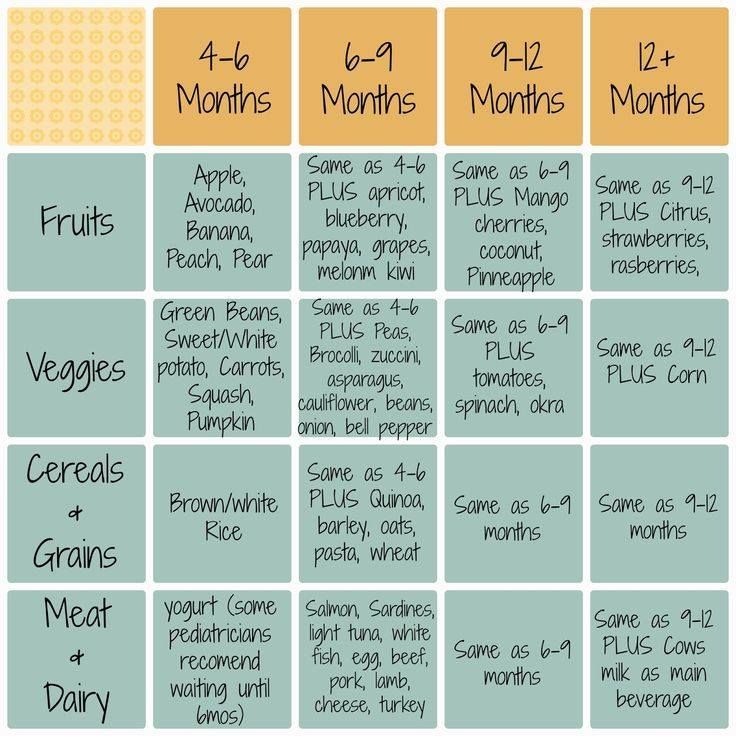 Use a knife to gently cut around the peel about 2 inches down, leaving some of the peel on so that the banana is easy for baby to hold and less slippery.
Use a knife to gently cut around the peel about 2 inches down, leaving some of the peel on so that the banana is easy for baby to hold and less slippery.
Roasted Sweet Potato Wedges
Preheat oven to 400 degrees and line a rimmed baking sheet with foil. Wash and dry the sweet potato. (You don't need to peel it.) Cut in half, then cut lengthwise into strips. Cut each strip in half again until each is about 1/2-inch thick. Slice in half horizontally if the sweet potato is very long. (Each strip should be about the size of your finger.) Place into a bowl and toss with the olive oil. Spread onto prepared baking sheet and roast for 22-25 minutes or until soft. Let cool slightly and serve.
Roasted Apple Wedges
Roasted Broccoli Florets
Preheat the oven to 400 degrees F. Place the broccoli onto a rimmed baking sheet and toss with the olive oil, coating and mixing well until all of the florets are a little shiny and coated with oil.
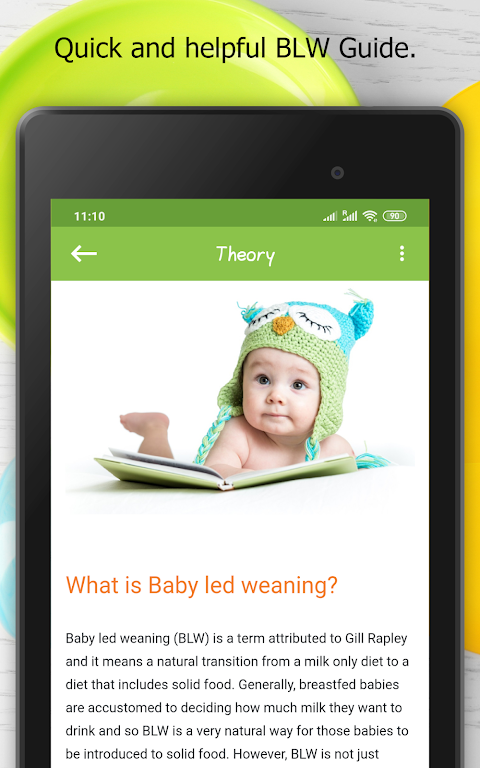 Roast for 15-18 minutes or until tender. Let cool slightly and serve.
Roast for 15-18 minutes or until tender. Let cool slightly and serve.
Sauteed Green Beans
Warm the oil in a large skillet over medium heat. Add the green beans and stir. Cover and cook for about 8 minutes. Remove cover and taste one to see if it’s soft enough. Cook for an additional minute or two as needed.
Melon slices
Avocado Toast
Avocado Spears
(Make sure the avocado is ripe and soft): Cut a thick strip of avocado and offer to baby. You can leave the peel on if that makes it easier for baby to hold (just wash it first).
Lamb or Beef
Prepare a roast, steak, or chop without salt and with butter or olive oil until cooked medium well. Offer a thick slice at least the size of your finger or a drumstick.
Pan-Seared Chicken Thighs
Warm 1 tablespoon olive oil or butter in a large skillet over medium heat. Add the chicken thigh and top with a few slices of fresh garlic, if desired.
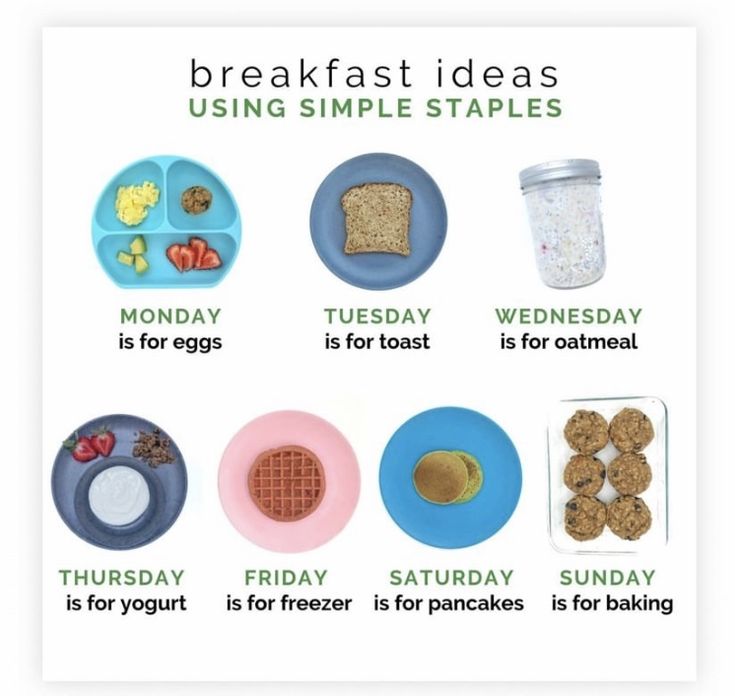 Cover and cook for 4-5 minutes. Remove cover. Flip over and cook for an additional 4-5 minutes uncovered or until a meat thermometer registers 165 degrees F.
Cover and cook for 4-5 minutes. Remove cover. Flip over and cook for an additional 4-5 minutes uncovered or until a meat thermometer registers 165 degrees F.
- Add spices like garlic powder, cinnamon, cumin, oregano, or any other non-spicy flavor you like to make these more interesting.
- Offer just one piece at a time when starting out.
- If baby gnaws a piece down into a smaller piece, replace it with a larger one to avoid her putting a chunk of food into her mouth.
- Store any leftovers in an airtight container in the fridge for 3-5 days. Reheat briefly if needed.
- Remember that it's normal for babies to take time to actually ingest the food. Part of the process is exploring all of the senses related to the experience of eating.
Calories: 28kcal, Carbohydrates: 2g, Protein: 1g, Fat: 2g, Saturated Fat: 1g, Polyunsaturated Fat: 1g, Monounsaturated Fat: 2g, Sodium: 6mg, Potassium: 75mg, Fiber: 1g, Sugar: 1g, Vitamin A: 23IU, Vitamin C: 2mg, Calcium: 2mg, Iron: 1mg
Tried this recipe?Rate in the comments and tag @yummytoddlerfood on IG!
50+ Best Finger Foods for Babies (and Toddlers)
Introducing finger foods to your baby can be exciting and overwhelming! Here is everything you need to know about serving finger foods so that they are safe and delicious!
Jump to:- Baby Finger Foods - FAQ
- Choking vs.
 Gagging
Gagging - How to Serve Finger Foods to Baby
- Finger Foods for 6-8 Month Old Baby
- Finger Foods for 9-11 Month Old Baby
- Finger Foods for 12+ Months
- Best Finger Foods for Baby
- Real-Life Baby Food Ideas
Baby Finger Foods - FAQ
When is the best time to introduce finger foods to baby?
If you've decided to start solid foods by taking the baby led weaning approach, you will be introducing big, soft-cooked finger foods from the start.
If you are taking the traditional approach of starting with purees, you will most likely start offering finger foods around 8-9 months of age when you and your baby feel ready to move forward with texture.
Regardless of which method you choose, the goal is to offer finger foods by 9 months at the latest.
Here is an in-depth post on purees vs. baby led weaning.
When can babies eat textured foods?
As soon as they are ready for solids!
I talk a lot about the importance of introducing a wide variety of flavors AND textures from early on, and that’s because research shows babies are much more willing and open to trying new foods than children between ages 2-8 as food neophobia has been shown to set in during this time (1).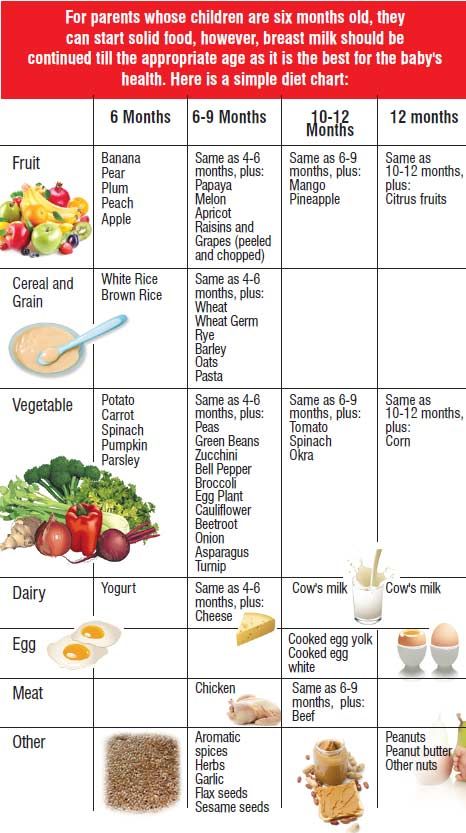
Familiarity is a BIG part of taste and acceptance, and the earlier the exposure to all the different flavors and textures, the greater their acceptance.
If your baby stays on pureed textures for too long, it may be much more difficult to get them to accept different textures later.
In other words, early exposure has a significant impact in shaping food preferences and eating habits that are tracked into childhood and beyond (2).
If you're feeling anxious about offering textured foods from the start and want to take the traditional weaning route where babies are spoon-fed purees or the combination approach (you do you!), here's how to safely move forward from purees to textured foods.
Whatever method you choose, the end goal is to introduce a wide variety of flavors and textures before the age of 1.
Can babies eat finger foods without teeth?
While you might think babies can’t eat foods that aren’t pureed until they have teeth, the reality is they don’t need teeth to enjoy table/finger foods.
I’m not sure if you’re aware of this but we actually chew with our molars, not the front teeth. And if you wait until the molars come in (normally around 12-18 months) to move on to table foods, you would totally miss that critical “window of opportunity” for developing food preferences.
Not to mention, failure to move from purees to textured foods by 9 months may lead to increased risk for feeding difficulties later in life (3).
So how are they able to handle table foods without the molars? With their strong gums! I was totally blown away when I saw them in action!
And it is our responsibility as parents to make sure that the foods are appropriately cooked and served, and that’s what I want to share with you!
Do keep in mind, I’m sharing general timelines & guidelines here. What’s most important is to follow your baby’s lead as every child is so different and they develop at their own pace.
Is your baby 6 months old and up?
Learn all the secrets to starting solids safely while optimizing nutrition!
I NEED IT NOW!
Choking vs. Gagging
Research actually shows that there’s no greater risk of choking with baby led weaning in comparison to the traditional feeding practices (4).
Most important - avoid the choking hazards
for 6-12 months (from the CDC)Keep in mind, choking is different from gagging, which is very common and to be expected. Gagging is a safety mechanism to prevent choking and contrary to how it appears, it doesn’t really bother the babies.
Sit on your hands, remain calm, and let them work through it. Do NOT try to fish out the food from their mouth. Here are some additional tips on how to get through the first month of baby led weaning.
How to Serve Finger Foods to Baby
how to serve zucchini to babiesIn this section, you will learn how to cut and cook the finger foods so they are the appropriate shape and texture according to age.
Finger Foods for 6-8 Month Old Baby
Food shapeCut so that the food is about the size of 1-2 adult fingers pressed together widthwise and the length of an adult pinky finger (or longer).
Contrary to what you might think, serving big pieces of food will actually minimize choking risk and make it easier for your baby to grab with their fist. Initially, everything will likely get demolished, but with practice, your baby will learn to have better control of hand force.
TextureFoods should be firm enough to grasp but soft enough to easily smoosh between two fingers or mash with the tongue on the roof of the mouth.
Roll slippery food in ground nuts, seeds, flour, etc to make it easier for your baby to pick up. Crinkle cutters can also be very helpful (this tool is great!).
Is your baby 6 months old and up?
Learn all the secrets to starting solids safely while optimizing nutrition!
I NEED IT NOW!
Finger Foods for 9-11 Month Old Baby
By this age, babies are learning to move food side to side within their mouths as well as forward and backward.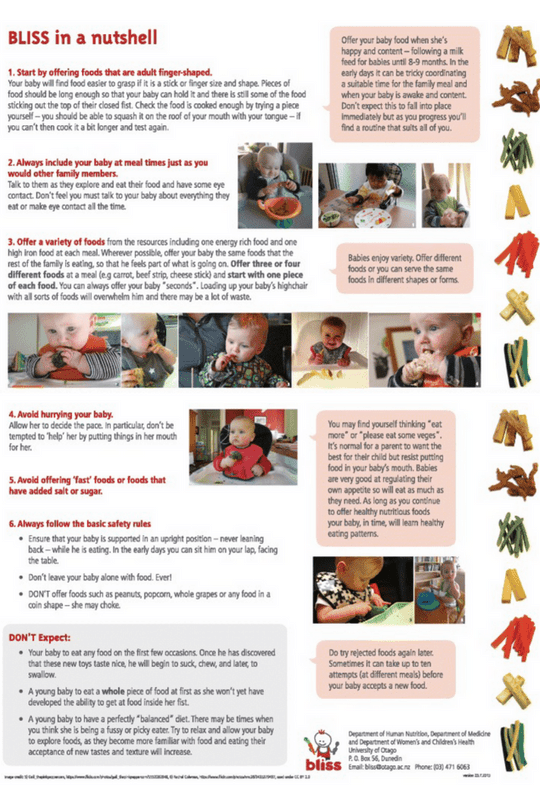 They are also starting to learn the concept of biting (hopefully anyways).
They are also starting to learn the concept of biting (hopefully anyways).
Your baby is mastering their pincer grasp and able to pick up smaller pieces of food between the thumb and index fingers. Therefore, you can begin to offer smaller bite-sized pieces.
But do continue offering larger pieces of food so they can learn to take bites.
TextureYou can start serving slightly firmer foods by shortening the cooking time for veggies, roasting more often rather than just steaming, etc. Depending on the number of teeth your baby has, chewing ability, and your comfort level, you can start offering finely grated raw fruits and veggies.
If your baby constantly turns into a competitive food eater (like mine did), here are some things you can do to help slow them down:
- Help set pace by placing small amounts of food in front of her at a time either directly on the table/tray or a plate. I personally just took the plate away every time his mouth was full and encouraged him to finish chewing before offering his plate again.
 It was tedious but worked well for us.
It was tedious but worked well for us. - Offer utensils (here are our favorites). Using it requires fine motor skills which will help slow down pace.
You may also be interested in: healthy baby snacks
Finger Foods for 12+ Months
ShapeAgain, try to encourage your child to learn to take bites by not cutting up the food as much. As always, role modeling can do wonders in helping them to learn this new skill.
If your child is continuing to shove food, learn how to teach them to take bites.
TextureYou've done the hard work! At this point your child should be able to handle almost all textures and eating like the family. Can you start offering crunchy vegetables? Yes! Here's a guide on how to introduce raw vegetables to your little one in a safe and fun way.
Is your toddler becoming picky?
Arm yourself with these strategies that will transform your mealtimes!
YES, PLEASE!
Best Finger Foods for Baby
Now that you know how to serve the food in an age-appropriate way, here's a master list of specific foods to enjoy with your baby!
Be sure to click on the links for more details on each of the specific foods.
Iron-rich Finger Foods for Baby
Iron is arguably THE most important nutrient for babies and it is one of the primary reasons that we start solids when we do. Be sure to incorporate one of these foods at every meal to help meet their high needs.
- Beef
- Beans
- Chicken
- Eggs
- Lentils
- Salmon
- Sardines
- Shrimp
- Tofu
Related: Top Iron-Rich Foods for Babies and Toddlers
Finger Foods for Baby - Vegetables
- Asparagus
- Beets
- Bell peppers
- Broccoli
- Butternut Squash
- Carrots
- Cauliflower
- Parsnips
- Sweet potato - these sweet potato rounds are so fun!
- Zucchini
And as you see in the image above, do not be afraid to season your baby's food from the start!
Also check out: Vegetables for babies (with 30+ recipes)
Finger Foods for Baby - Fruits
- Avocado - sliced into wedges or bite-sized pieces
- Apples - serve similar to pears
- Banana - try soaking in peanut butter.
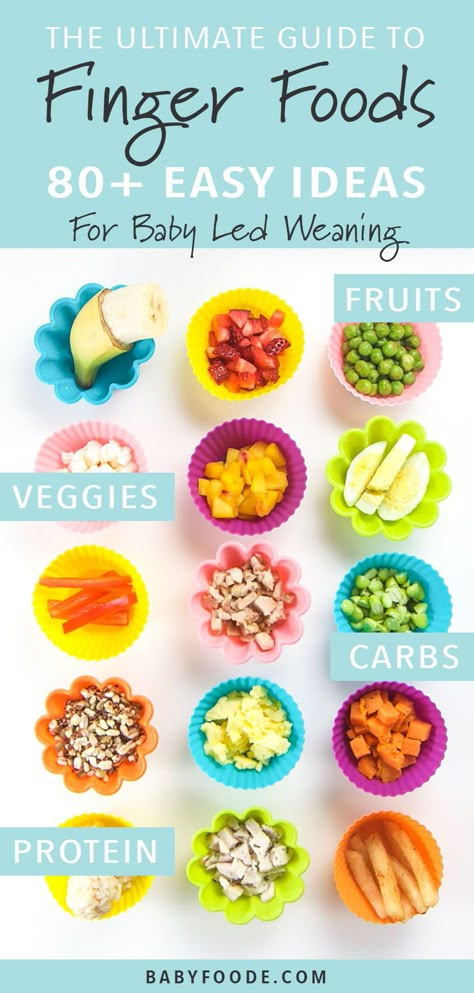 Be sure to thin it out as globs of peanut butter or any nut butter is a choking hazard
Be sure to thin it out as globs of peanut butter or any nut butter is a choking hazard - Blueberries - smashed
- Grapes - hold off until 9 months and be sure to serve quartered.
- Kiwi - Halves, quarters, bite-sized
- Mangoes
- Melons - large thin rectangles
- Pears
- Peaches
- Strawberries
First foods - Fruits vs. Vegetables
Finger Foods for Baby - Whole Grains
Here are some quick and easy ways to incorporate more whole grains into your baby's diet. You will find that a lot of these recipes also contain protein, iron, fruits, and vegetables!
Homemade Baby Oatmeal
Learn how to cook the perfect oatmeal for baby. It's easy, fast, and loaded with vegetables! Serve as is or shape into fingers or balls, baby led weaning style!
Get the recipe
Vegetable baby French toast
This savory baby vegetable French toast or eggy bread is an EASY and fun way to use up leftovers.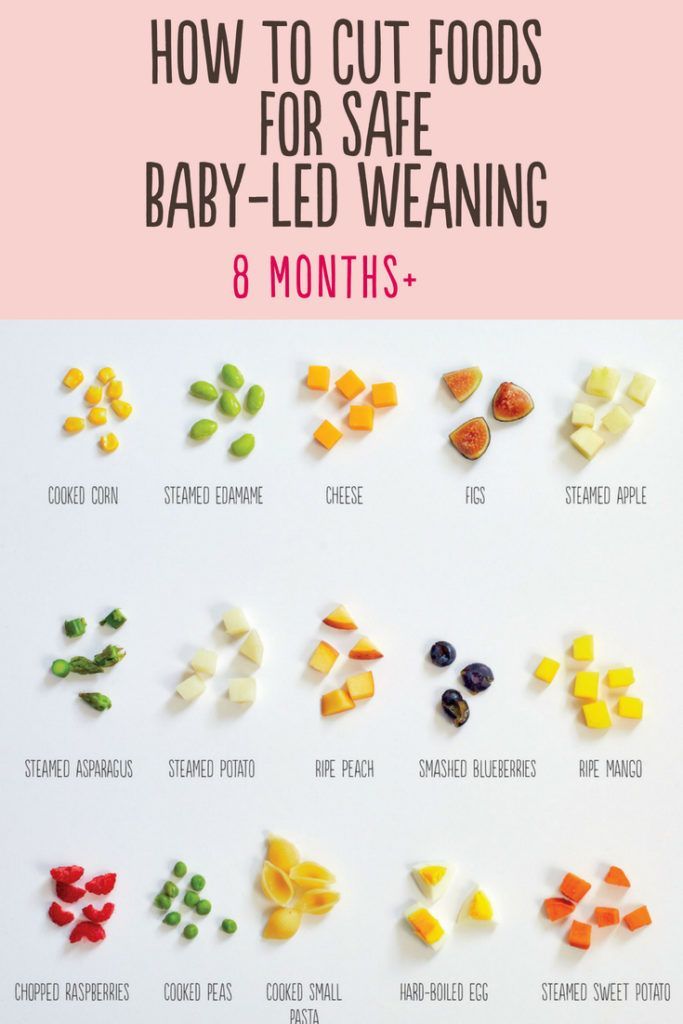 Suitable for babies 6 months and up!
Suitable for babies 6 months and up!
Get the recipe
Baby Banana Pancakes
Made in a blender with simple ingredients, these banana pancakes for babies and toddlers make for a delicious and filling snack or meal. Fluffy and moist, if you are looking for a baby led weaning pancakes recipe, this is it!
Get the recipe
Spinach Pancakes
These green baby pancakes are super easy to make, healthy, and the perfect finger food for baby led weaning.
Get the recipe
Strawberry banana pancakes
Made with simple, healthy ingredients, these strawberry banana pancakes are light, fluffy, and delicious! They contain no added sugar and are a delicious breakfast for the whole family!
Get the recipe
Healthy Blueberry Blender Muffins for Babies
These blueberry blender baby muffins are sweetened with fruits only and loaded with nutrition! They're soft and moist, making them perfect for babies
Get the recipe
Healthy Beet Muffins for Babies
Made entirely with healthy ingredients, like beans, peanut butter, and no added sugar, these blender muffins can be enjoyed as breakfast, snack, or added to lunchboxes!
Get the recipe
Vegetable Waffles with Peanut Butter
EASY to make, healthy peanut butter vegetable waffles for babies and kids! A great way to enjoy more protein, fat, and veggies for breakfast.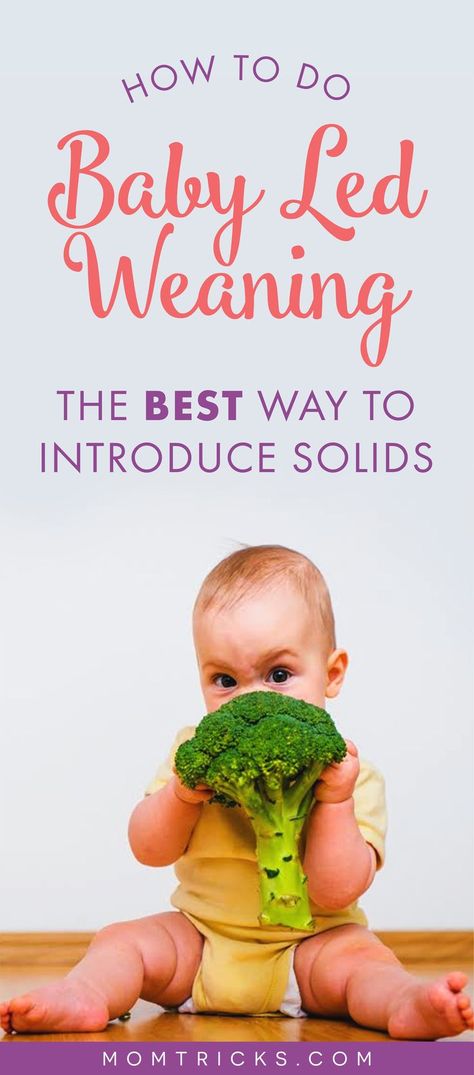
Get the recipe
Savory Baked Oatmeal with Vegetables
This savory baked oatmeal is so easy to make and a great way to enjoy vegetables for breakfast! Perfect for baby led weaning and lunchboxes.
Get the recipe
Healthy Baked Strawberry Oatmeal
Super easy to make, this healthy baked oatmeal recipe with juicy strawberries and bananas is the perfect make ahead breakfast or snack for the whole family!
Get the recipe
Iron-rich baby pasta
A baby pasta recipe that is loaded with iron and vegetables!
Get the recipe
Real-Life Baby Food Ideas
at 7.5- monthsat 10-11 monthsAll the images you see in this article are actual meals I served to my babies.
If you are feeling confused and overwhelmed by what foods to serve, how to prepare foods so they are safe, how to introduce allergens and a wide variety of foods, how to adapt family meals so you don't spend hours slaving away in the kitchen making two separate meals every. single.day, and on and on...
single.day, and on and on...
My 3 month program will save you time, energy, money, and sanity!
I’ve done all the hard work for you so all you need to do is follow the daily and weekly game plan and watch the cooking demos for EVERY.SINGLE.MEAL you will make for 3 months. By doing so you’ll be able to serve all the meals you see here plus 130+ effortlessly!
I’ve also heard from so many parents that an unexpected benefit to following this program for their baby was that it encouraged their older fussy eater(s) to start trying new foods and expanding their food choices.
Do you want to minimize picky eating and set a solid foundation for a lifetime of healthy eating habits?
Check out this 3 month mastering self-feeding program! It’s the closest thing to me being in your kitchen
And be sure to follow me on Instagram for more helpful videos!
How much to breastfeed? | Nutrilak
08/10/2021 Reading time: 5-6 10010
The decision on how much to breastfeed her baby can only be made by the mother herself.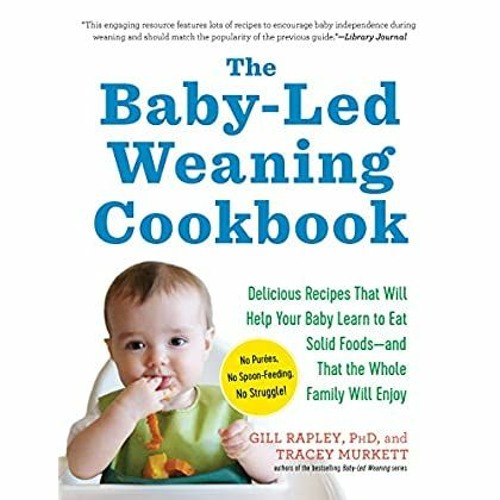 All advice on this matter - from experienced mothers, grandmothers and even from doctors - provided that both mother and baby are healthy can only be considered as information for thought, and not as a direct indication of action. But still, in order to finish breastfeeding without harm to yourself and the baby, it is worth considering a few points.
All advice on this matter - from experienced mothers, grandmothers and even from doctors - provided that both mother and baby are healthy can only be considered as information for thought, and not as a direct indication of action. But still, in order to finish breastfeeding without harm to yourself and the baby, it is worth considering a few points.
How much should you breastfeed?
If you answer this question briefly, then as much as mom and baby need.
As a rule, mothers do not wait for the self-weaning of the baby and decide on the completion of breastfeeding for two.
If we talk about the minimum terms of breastfeeding, then the child should receive breast milk at least in the first 3-4 months of life - there are good reasons for this. In the period after birth, which is not without reason called the fourth trimester, the baby's digestive tract still continues to mature, the normal intestinal microflora is not fully formed, and enough enzymes are not yet produced to digest food. No matter how high-quality the mixture is, not to mention the fact that the set of components in the mixture is also much poorer than breast milk. All this can affect the health and development of the child, if not immediately, then in the future, so it is necessary to fight for the possibility of breastfeeding in the first months of his life.
No matter how high-quality the mixture is, not to mention the fact that the set of components in the mixture is also much poorer than breast milk. All this can affect the health and development of the child, if not immediately, then in the future, so it is necessary to fight for the possibility of breastfeeding in the first months of his life.
As for how long to continue breastfeeding, the controversy does not subside. Someone in the old fashioned way continues to believe that after a year breast milk almost harms the baby, someone is ready to feed up to 4-5 years, explaining this by the benefits for the child. The truth, as usual, lies in the middle.
WHO guidelines for feeding times
This is important!
The World Health Organization, whose opinion is authoritative for doctors of all countries, recommends feeding children exclusively with breast milk in the first six months of life, and then continuing breastfeeding with complementary foods for at least 2 years and beyond: as long as possible.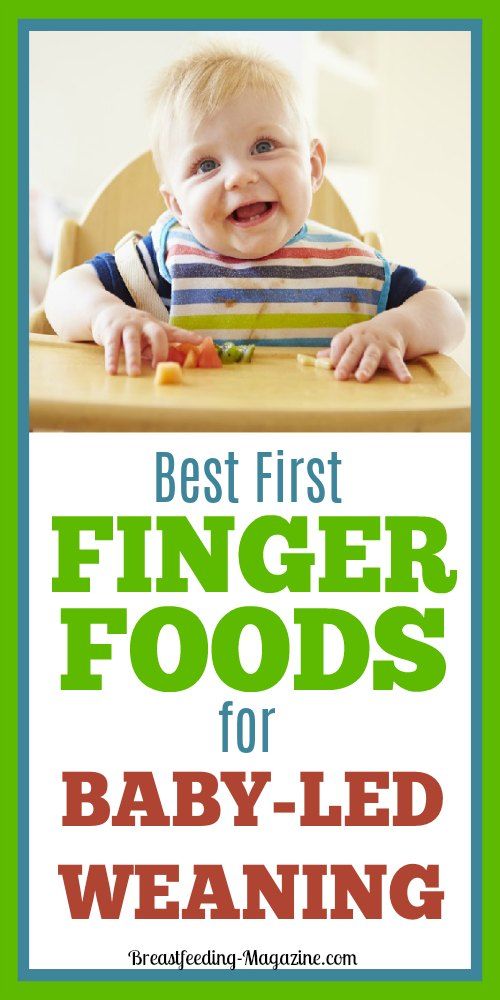
The WHO does not name the age at which breastfeeding should be stopped, leaving the decision to the mother.
The need for breastfeeding after a year is explained by the fact that in breast milk during this period the content of immunoglobulins (antibodies) increases - proteins that can protect the body from infections. That is, the composition of milk is really changing, but only for the better. This is no longer the main food for the child, but its natural protection against diseases: both in childhood and in the future - in adulthood.
Is it okay to breastfeed until 3 years of age?
Based on the WHO recommendations, the answer is unequivocal: this is normal. However, recommendations should always be applied on a case-by-case basis, and in some cases breastfeeding for up to three years or longer can cause problems.
Breastfeeding up to 3 years is normal if:
- mother has enough milk;
- breast milk is not the basis of the child's diet, he eats normal food well;
- per day the child is applied to the breast 1-2 times and does not require it at other times;
- at night the baby sleeps peacefully, and does not “hang” on the chest.
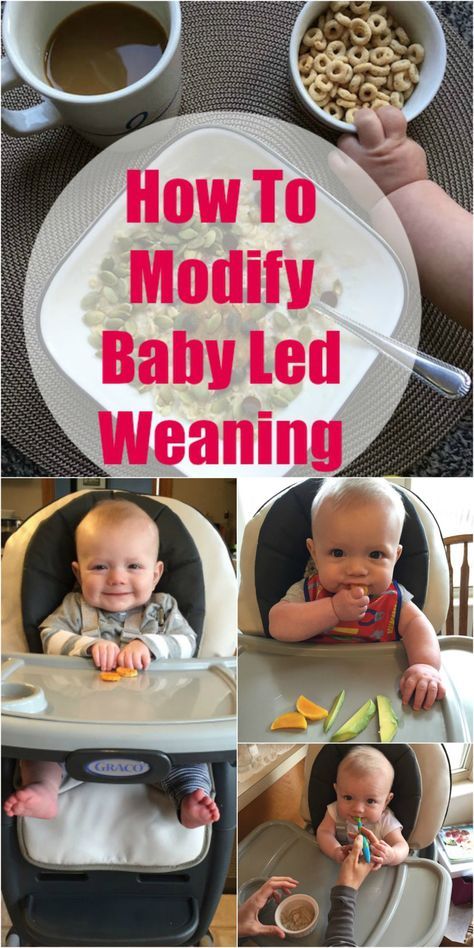
If both mother and child are well, then there are no problems in prolonged feeding either at 3 years old or after. Sooner or later, the baby will refuse the breast on its own.
If some or all of these points are not fulfilled: the baby is painfully dependent on breastfeeding, is nervous, does not play on its own, being afraid to move away from the mother (and from her breasts), does not eat solid food or food with pieces, sleeps restlessly - this is no longer the norm. The condition of the mother also needs to be taken into account. If there is little milk, the chest aches after feeding, sleep suffers, then maintaining breastfeeding at 3 years of age is not worth the sacrifice on your part.
Tips for weaning
The main advice is not to do it abruptly. The classic scheme of our grandmothers: to take the child to spend the night with relatives and tighten the chest so that the milk “burns out” - today it is considered a mockery of the mother and child, and rightly so.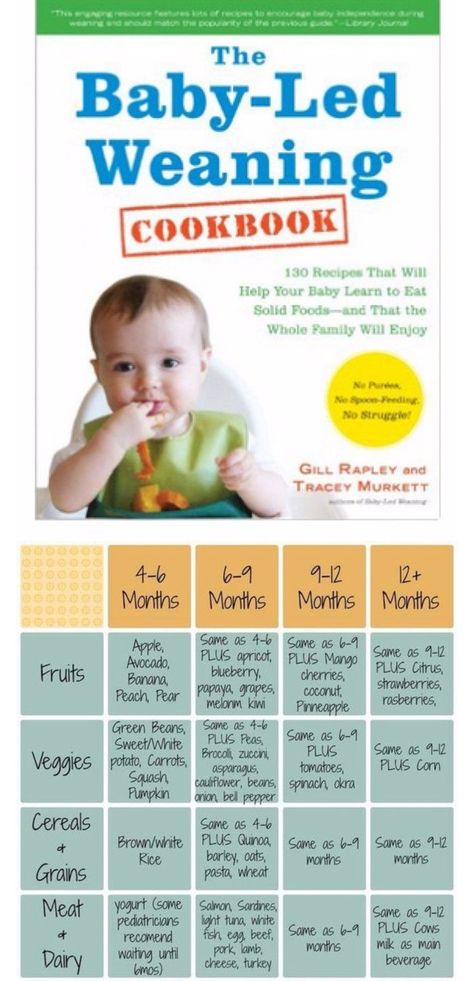
Weaning should be mild and take weeks or even months:
- If the baby suckles until he falls asleep, start feeding and falling asleep in time: feed, then put to bed. This will be a difficult period. The baby will whimper and ask for breasts, but you need to calm him down in other ways: hugging, stroking, singing songs, telling fairy tales, distracting him with your favorite toy. At night, when the baby begins to cry in a half-asleep and looks for a breast, continue to feed.
- The last step is to remove the night feeds. When the baby cries - you need to console him with words, if this does not help - you can take it in your arms and shake it: all methods are good, just not to be cowardly and not to give breasts if you have firmly decided to stop breastfeeding.
- During the weaning period, wear more closed clothing and pay more attention to the child: hug him more often, maintain a calm, friendly environment.
- Do not start weaning during stressful periods for the baby: during moves, travel, some negative events in the family, at the beginning of the baby's visit to kindergarten.
 In summer, HB is not curtailed due to the high risk of intestinal infections. Also, it is not completed a few days before and after vaccinations.
In summer, HB is not curtailed due to the high risk of intestinal infections. Also, it is not completed a few days before and after vaccinations.
Summing up
- Breastfeed as much as mother wants and can.
- WHO recommends breastfeeding for up to two years or longer, again at the request of the mother and child.
- Feeding up to 3 years is normal if breastfeeding does not create problems with nutrition, sleep, the behavior of the child and the well-being of the mother.
- It is necessary to wean the baby from the breast gradually: first, remove daytime feedings one at a time, then stop using the breast as an association for falling asleep, and lastly, remove night feedings.
(3 ratings; article rating 5.0)
How to wean a child from night feeding after a year
previousNext
- When to Wean Your Baby From Night Feeds
- Ways to wean your baby from night feedings
Contents:
Sooner or later, every mother begins to worry about the question of how to wean her child from night feeding. Some no longer had the strength to get up several times a night to prepare the mixture. Others are not satisfied with the little "third wheel" who settled in the matrimonial bed. And someone strives to comply with all the prescriptions of his doctor.
Some no longer had the strength to get up several times a night to prepare the mixture. Others are not satisfied with the little "third wheel" who settled in the matrimonial bed. And someone strives to comply with all the prescriptions of his doctor.
When to wean a child from night feedings
Once complementary foods are introduced, i.e. at 4-6 months of age, most children are well fed during the day and no longer require night feedings for their development.
So, in principle, you can try to wean a child from night feedings already from 6 months. Many children by this age are not at all hungry at night, they just have formed a stable habit of waking up at night. Mom should be aware that the weaning process may take some time and in any case will be associated with some additional inconvenience that causes lack of sleep. Therefore, you first need to analyze your own readiness to wean the child from night feedings. After a year, it will be much easier to do this.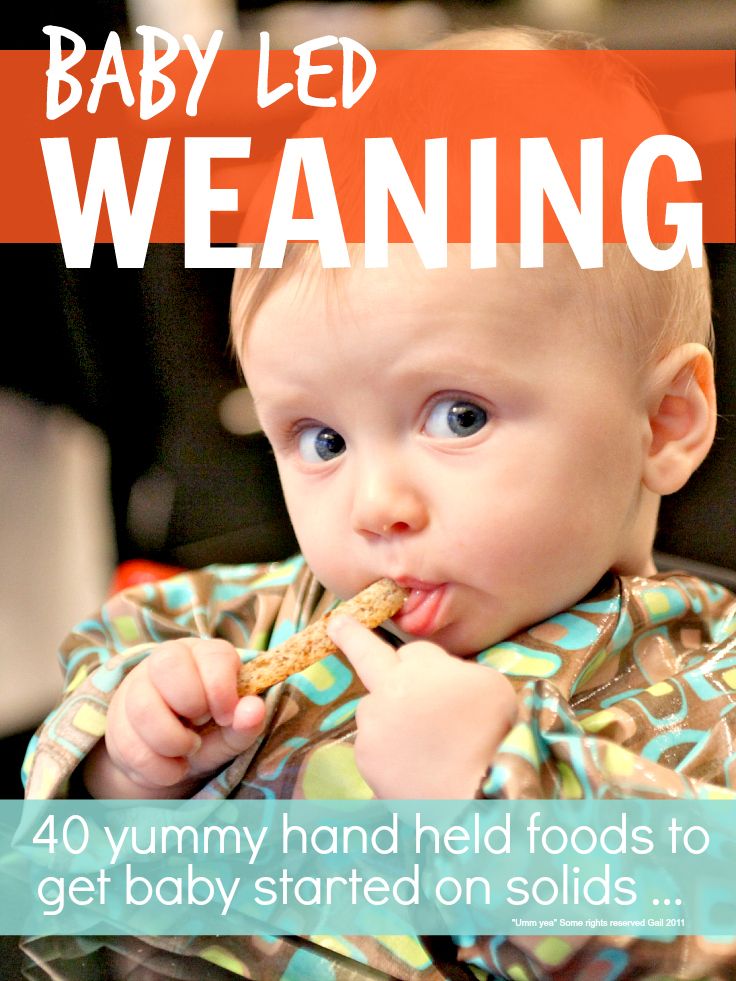
But in addition to satisfying the purely physiological need for food, the child, with the help of feeding, makes up for the lack of communication with the mother. This becomes especially noticeable when the baby is sick, or he is teething, or during the day he does not see his mother. In such cases, the child requires attention at night, asks for a breast or a bottle. Therefore, in the process of weaning from night feedings during the day, it is worth giving him maximum useful time to ensure psychological comfort, and the baby did not need to be convinced of his mother's love in the dark. If the baby asks for attention at night due to the discomfort caused by teething, in this article we tell you how to reduce unpleasant symptoms.
Ways to wean your baby from night feedings
-
Gradually replace feeds with water. First, offer the child to just drink water in one nightly feeding. If water does not work right away, then you can dilute the milk or mixture in a ratio of 1 to 3, increasing the amount of water in the mixture every night.
 Soon the child will not be interested in waking up to drink some water, and perhaps in such a simple way it will be possible to reduce the number of nightly feedings.
Soon the child will not be interested in waking up to drink some water, and perhaps in such a simple way it will be possible to reduce the number of nightly feedings. -
Reduce nighttime feeding while breastfeeding. It is necessary to teach the baby to the fact that the night is a time for sleep, and not for food, and you should not use the breast as a dummy.
-
Increase the intervals between feedings by various ways of putting the baby to sleep during night awakenings (songs, motion sickness, fairy tales, strokes).
-
Feed at night with formula or porridge
-
Increase the number of breastfeedings during the day. When breastfeeding, usually night feeding remains the last feeding before the final weaning, but in the case when the mother wants to keep breastfeeding, but reduce the number of night feedings, it is worth satisfying the baby's need for the breast as much as possible during the day.
-
Change the way the child is put to bed.
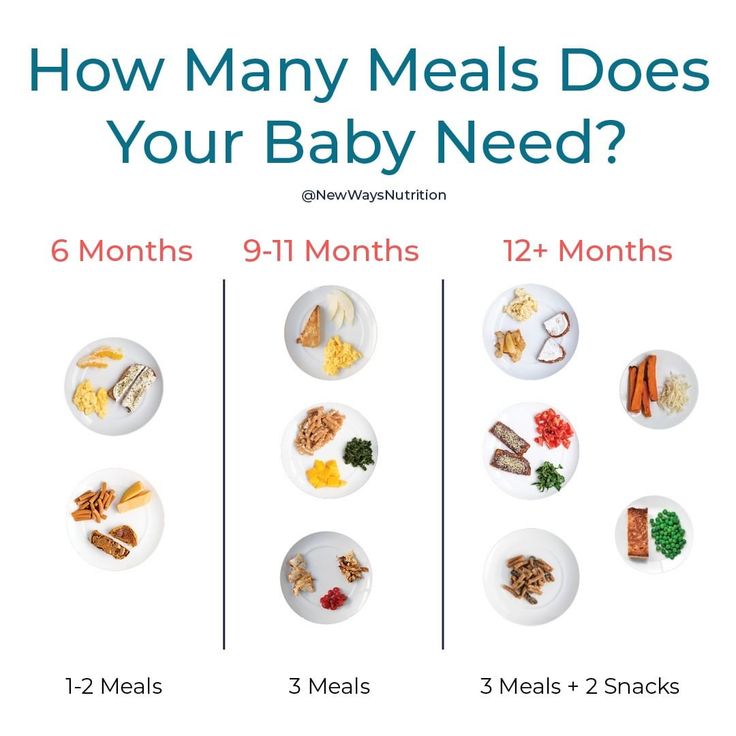 Cardinally euthanize the child without feeding or, after breastfeeding a little, transfer to the crib. You can put the baby to sleep while walking in a stroller or give it to dad for motion sickness.
Cardinally euthanize the child without feeding or, after breastfeeding a little, transfer to the crib. You can put the baby to sleep while walking in a stroller or give it to dad for motion sickness. -
Restrict access to the chest at night. When sleeping together, waking up and not immediately finding a nipple, the child simply nuzzles his mother in the side and falls asleep, because he is not really hungry, but simply satisfies his need for closeness to his mother. Frequent contact with the chest can be replaced with regular tactile contact, which we talk about in this article.
-
Sleep separately - in different beds or in different rooms. In cases when the baby wakes up, you can lie down next to him to soothe or feed, but then still go to your bed.
-
Explain. Children older than a year can already be explained that no one eats at night, everyone sleeps, and food will be when it becomes light. This must be constantly repeated both at night, when waking up, and during the day, during games.
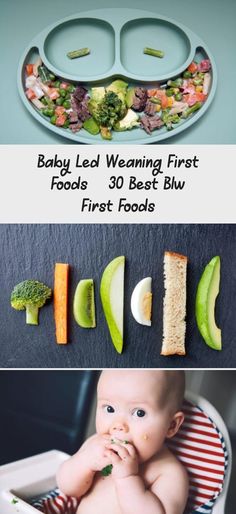 Moreover, it is important not to deviate from your own words, and if the child still requires food, in every possible way to distract from this, tell tales, rock him in his arms, do a light massage. You can offer water.
Moreover, it is important not to deviate from your own words, and if the child still requires food, in every possible way to distract from this, tell tales, rock him in his arms, do a light massage. You can offer water.
If you see that the child began to behave very capriciously, aggressively, his daytime sleep was disturbed, he does not let you go a single step during the day, or, on the contrary, pushes you away, perhaps he has not yet matured in order to completely refuse from night feedings.
It is the baby's daytime behavior that will tell you if you are moving in the right direction. You should not ignore the reactions of the child, sometimes it is better to slow down or completely abandon the idea for a while so as not to injure the baby, depriving him of a sense of trust in the world. After all, the period when the baby is in dire need of you is, in fact, so short that later you will remember your nightly feedings with nostalgia, waiting for your grown-up child from the disco.

